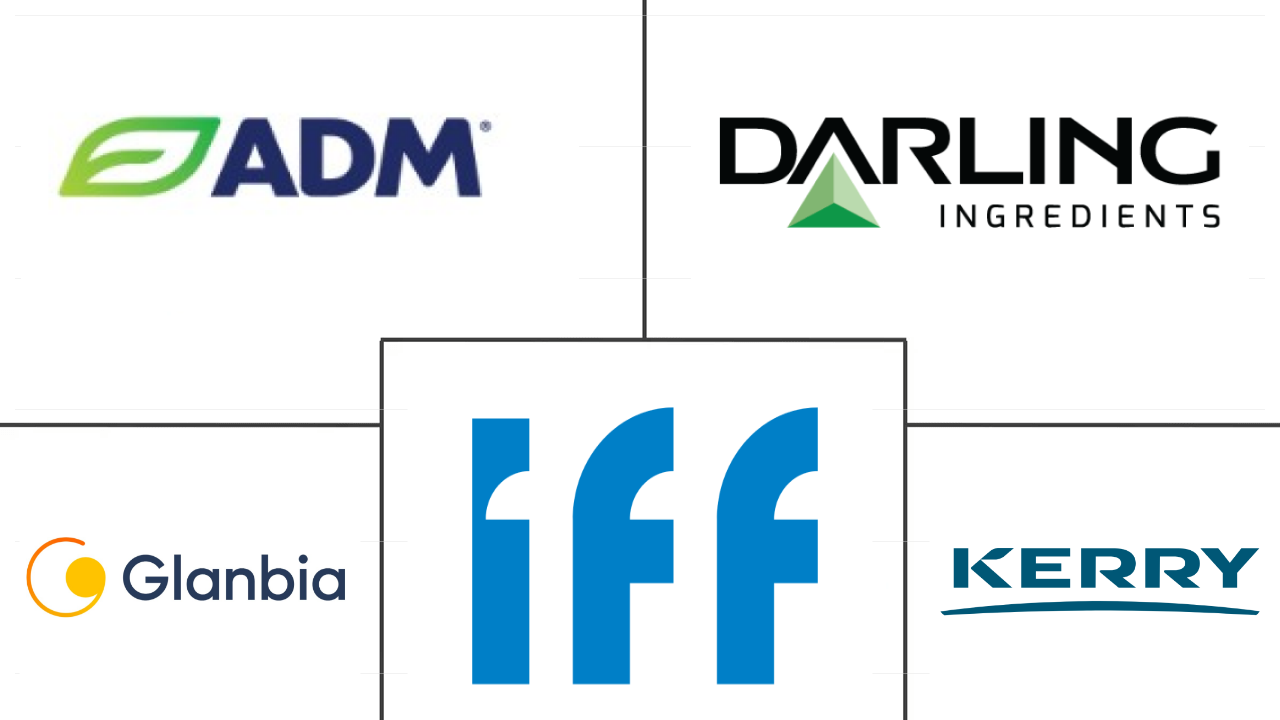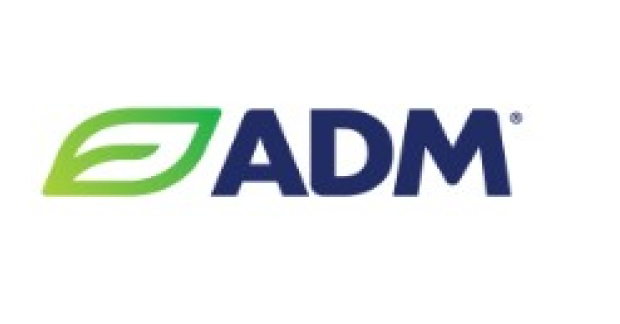Market Size of united states protein Industry
|
|
Study Period | 2017 - 2029 |
|
|
Market Size (2024) | USD 6.16 Billion |
|
|
Market Size (2029) | USD 7.48 Billion |
|
|
Largest Share by End User | Food and Beverages |
|
|
CAGR (2024 - 2029) | 3.96 % |
|
|
Fastest Growing by End User | Personal Care and Cosmetics |
Major Players |
||

|
||
|
*Disclaimer: Major Players sorted in no particular order |
United States Protein Market Analysis
The United States Protein Market size is estimated at 6.16 billion USD in 2024, and is expected to reach 7.48 billion USD by 2029, growing at a CAGR of 3.96% during the forecast period (2024-2029).
6.16 Billion
Market Size in 2024 (USD)
7.48 Billion
Market Size in 2029 (USD)
5.42 %
CAGR (2017-2023)
3.96 %
CAGR (2024-2029)
Largest Market by Source
68.39 %
value share, Plant, 2023
Huge availability, functionality, low price of soy, wheat, and pea, and being a vegan protein source have contributed to the leading position of plant proteins in the US.
Largest Market by End User
51.90 %
value share, Food and Beverages, 2023
The F&B segment leads the market, driven by the meat and meat alternative, beverage, and bakery sectors. The rise in functional F&B boosts the demand for protein ingredients.
Fastest growing Market by Source
6.84 %
Projected CAGR, Microbial, 2024-2029
The demand for microbial proteins, mainly algae protein, is noted from the supplements segment. Constant innovation and new entrants are anticipated to drive this segment.
Fastest growing Market by End User
6.91 %
Projected CAGR, Personal Care and Cosmetics, 2024-2029
Protein-enriched skin, body, and hair care products' demand is rising. Players offering products with protein ingredients in distinct concentrations are boosting the segment.
Leading Market Player
12.89 %
market share, Archer Daniels Midland Company, 2021

Archer Daniels Midland Company holds the largest share of the market. The company focuses on expanding its consumer base and has collaborated with regional clients.
Sustainable alternative protein sources are boosting the market demand with application mostly through food and beverages sector
- By application, the food and beverage segment led the applications for proteins in the country, accounting for a major volume share. The share was highly influenced by the dairy- and meat-alternative sub-segments that accounted for 35% of the overall proteins consumed in the country in 2022. The share was primarily driven by the rising number of vegan and flexitarian consumers who increasingly rely on or are open to animal-free product offerings in the market.
- It was followed by the animal feed segment, largely driven by the application of animal proteins. The inclusion of sustainable alternative protein sources, such as insect protein, further increases the market scope in animal feed. Companies like Enterra Corporation and Darling Ingredients are boosting their production capabilities to offer a cost-effective and efficient source of feed-grade protein. As a result, with a volume CAGR of 1.52%, insect protein remained one of the fastest-growing protein types in animal feed over the study period.
- Personal care and cosmetics is the fastest-growing segment and is projected to register a CAGR of 6.79% by value during the forecast period. Proteins are used in a range of cosmetics products, including emulsions, gels, shampoos, conditioners, and creams. Proteins naturally found in the body, such as collagen, elastin, and keratin, are also gaining popularity owing to their higher efficacy in naturally strengthening skin and hair texture. Companies like Estee Lauder and Guerlain are increasingly investing in research and development to come up with more effective and sustainable alternative protein sources. This is further boosting the ingredient scope and application in personal care products and will aid the market's growth in the future.
United States Protein Industry Segmentation
Animal, Microbial, Plant are covered as segments by Source. Animal Feed, Food and Beverages, Personal Care and Cosmetics, Supplements are covered as segments by End User.
- By application, the food and beverage segment led the applications for proteins in the country, accounting for a major volume share. The share was highly influenced by the dairy- and meat-alternative sub-segments that accounted for 35% of the overall proteins consumed in the country in 2022. The share was primarily driven by the rising number of vegan and flexitarian consumers who increasingly rely on or are open to animal-free product offerings in the market.
- It was followed by the animal feed segment, largely driven by the application of animal proteins. The inclusion of sustainable alternative protein sources, such as insect protein, further increases the market scope in animal feed. Companies like Enterra Corporation and Darling Ingredients are boosting their production capabilities to offer a cost-effective and efficient source of feed-grade protein. As a result, with a volume CAGR of 1.52%, insect protein remained one of the fastest-growing protein types in animal feed over the study period.
- Personal care and cosmetics is the fastest-growing segment and is projected to register a CAGR of 6.79% by value during the forecast period. Proteins are used in a range of cosmetics products, including emulsions, gels, shampoos, conditioners, and creams. Proteins naturally found in the body, such as collagen, elastin, and keratin, are also gaining popularity owing to their higher efficacy in naturally strengthening skin and hair texture. Companies like Estee Lauder and Guerlain are increasingly investing in research and development to come up with more effective and sustainable alternative protein sources. This is further boosting the ingredient scope and application in personal care products and will aid the market's growth in the future.
| Source | ||||||||||||
| ||||||||||||
| ||||||||||||
|
| End User | |||||||||||||
| Animal Feed | |||||||||||||
| |||||||||||||
| Personal Care and Cosmetics | |||||||||||||
|
United States Protein Market Size Summary
The United States protein market is experiencing significant growth, driven by diverse applications across food, beverage, animal feed, and personal care sectors. The food and beverage segment dominates the market, with a substantial share attributed to dairy and meat alternatives, reflecting the increasing consumer shift towards vegan and flexitarian diets. This trend is further supported by the rising demand for sustainable protein sources, such as insect protein, particularly in the animal feed sector. Companies are enhancing their production capabilities to meet this demand, contributing to the market's expansion. The personal care industry is also witnessing rapid growth, with proteins like collagen, elastin, and keratin gaining popularity for their efficacy in enhancing skin and hair health. This has led to increased investments in research and development by major companies to explore more effective and sustainable protein sources.
Despite the growing vegan population, animal protein remains a staple in the American diet, with beef, poultry, and dairy being the primary sources. The market is bolstered by the high biological value of animal proteins, which are preferred by athletes and fitness enthusiasts for their superior amino acid profile. The prevalence of conditions like arthritis has spurred demand for collagen-based supplements, further driving market growth. The United States leads in chicken meat production and has a robust cattle industry, supported by government initiatives to strengthen the meat supply chain. The protein market is fragmented, with key players like Archer Daniels Midland Company, Darling Ingredients Inc., and Glanbia PLC playing significant roles. Recent developments include new product launches and expansions in manufacturing facilities, indicating a dynamic and evolving market landscape.
United States Protein Market Size - Table of Contents
-
1. MARKET SEGMENTATION (includes market size in Value in USD and Volume, Forecasts up to 2029 and analysis of growth prospects)
-
1.1 Source
-
1.1.1 Animal
-
1.1.1.1 By Protein Type
-
1.1.1.1.1 Casein and Caseinates
-
1.1.1.1.2 Collagen
-
1.1.1.1.3 Egg Protein
-
1.1.1.1.4 Gelatin
-
1.1.1.1.5 Insect Protein
-
1.1.1.1.6 Milk Protein
-
1.1.1.1.7 Whey Protein
-
1.1.1.1.8 Other Animal Protein
-
-
-
1.1.2 Microbial
-
1.1.2.1 By Protein Type
-
1.1.2.1.1 Algae Protein
-
1.1.2.1.2 Mycoprotein
-
-
-
1.1.3 Plant
-
1.1.3.1 By Protein Type
-
1.1.3.1.1 Hemp Protein
-
1.1.3.1.2 Pea Protein
-
1.1.3.1.3 Potato Protein
-
1.1.3.1.4 Rice Protein
-
1.1.3.1.5 Soy Protein
-
1.1.3.1.6 Wheat Protein
-
1.1.3.1.7 Other Plant Protein
-
-
-
-
1.2 End User
-
1.2.1 Animal Feed
-
1.2.2 Food and Beverages
-
1.2.2.1 By Sub End User
-
1.2.2.1.1 Bakery
-
1.2.2.1.2 Beverages
-
1.2.2.1.3 Breakfast Cereals
-
1.2.2.1.4 Condiments/Sauces
-
1.2.2.1.5 Confectionery
-
1.2.2.1.6 Dairy and Dairy Alternative Products
-
1.2.2.1.7 Meat/Poultry/Seafood and Meat Alternative Products
-
1.2.2.1.8 RTE/RTC Food Products
-
1.2.2.1.9 Snacks
-
-
-
1.2.3 Personal Care and Cosmetics
-
1.2.4 Supplements
-
1.2.4.1 By Sub End User
-
1.2.4.1.1 Baby Food and Infant Formula
-
1.2.4.1.2 Elderly Nutrition and Medical Nutrition
-
1.2.4.1.3 Sport/Performance Nutrition
-
-
-
-
United States Protein Market Size FAQs
How big is the United States Protein Market?
The United States Protein Market size is expected to reach USD 6.16 billion in 2024 and grow at a CAGR of 3.96% to reach USD 7.48 billion by 2029.
What is the current United States Protein Market size?
In 2024, the United States Protein Market size is expected to reach USD 6.16 billion.

